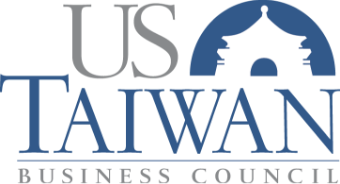President’s Report:
The US-Taiwan Business Council & U.S.-Taiwan Relations
2007
(Arlington, Virginia, December 6, 2007)
Report by Rupert Hammond-Chambers
The US-Taiwan Business Council had another strong year in 2007. We have seen solid economic growth in the US-Taiwan-China relationship, along with some interesting mergers and acquisitions activity – particularly in the technology, banking and finance sectors. In addition, the continued turbulent relationship between Taiwan and the United States and a non-existent relationship between Taiwan and China has left much work for the Council as it seeks to play its role as a robust voice for U.S. industry in Taiwan.
In January of 2007, we could point to only one thing in US-Taiwan relations as a significant net positive – the economic relationship, where bilateral economic ties and the Trade and Industry Investment Agreement (TIFA) process was moving forward. In contrast, the political/military relationship remained in deep distress. There had been little movement on funding President Bush’s April 2001 arms package – it was still languishing in the Legislative Yuan (LY) – and we saw continued friction with President Chen and his Taiwan identity politics. President Bush’s colleagues throughout government publicly and privately voiced deep frustration over the lack of a national consensus on basic defense and security imperatives, as well as on President Chen’s apparent unwillingness to take U.S. regional concerns into consideration when promoting Taiwan’s aspirations for greater global relevance.
What a difference a year can make.
The Economic Relationship Goes From Strength To Strength
The leadership of Ambassador Karan Bhatia (who regrettably has stepped down from his post as number 2 at the United States Trade Representatives’ office), coupled with the hard work of Tim Stratford and Eric Altbach (now at the National Bureau of Asian Research), deserves much of the credit for continued progress in the bilateral trade relationship.
There has been a careful adjustment in expectation by both sides as they have set their sights on “building blocks”, with continued progress in major areas including intellectual property rights (IPR) and agriculture. The TIFA process is a framework well able to handle bilateral trade issues typical of any major economic relationship, and its rejuvenation is most welcome.
The IPR story particularly has come far enough for the USTR to remove Taiwan from the IPR ‘Watch List’. While Taiwan’s education system remains a problem, with the use of its intranet as an illegal platform for file sharing, the progress Taiwan has made in all other areas is reason enough to remove it for a year. There should be an explicit understanding however, that Taiwan will go back on the list if similar progress isn’t made on the remaining issues.
In addition, both Taiwan and the United States have had preliminary discussions surrounding the launch of both tax and investment agreements. U.S. industry has shown considerable support for both initiatives, and the Council expects both bilateral agreements to pick up steam in 2008 after Taiwan concludes its elections this coming winter. These two areas constitute the core of our bilateral relationships building blocks, and should receive the full support of industry.
Mergers & Acquisitions (M&A) activity in Taiwan has remained heavy as increasing pools of global capital are looking at Taiwan as an investment opportunity. The largest sector to benefit has been banking, where myriad banks have been purchased both by private equity as well as by large global banks such as Citigroup and Standard Chartered. These institutions are looking at a double opportunity. They lead in the consolidation of Taiwan’s over-banked economy, helping whittle down the number of institutions from the high 50s to approximately 10 national banks. In addition, it is apparent that 2008 will herald a significant uptick in cross-Strait liberalization, which will likely include the granting of licenses for Chinese and Taiwan banks to open in their opposite markets. This represents a huge opportunity for global financial institutions to enter China in a “Trojan Horse”, and benefiting from banking China’s most successful investment class, i.e. Taiwan entrepreneurs and businesses.
Financial services isn’t the only area where Taiwan is seeing an increase in M&A interest and activity, with capital flowing to sectors as varied as manufacturers of golf equipment, bicycles, cable, and semiconductor chips. The fact is that Taiwan companies remain undervalued as a function of poor macroeconomic management by the Taiwan government. In addition, legacy China investment policies have forced Taiwan companies into business decisions that have meant that they don’t fully realize their value in China. Any significant improvement in cross-Strait investment policy should release some of this pent up value and represents a potential boon to well placed investors.
As 2008 approaches, it would be useful to set some expectations and goals for the year in bilateral economic ties. The present momentum in the trade relationship warrants a continued response from the Bush Administration, which should include the removal of Taiwan from USTR’s ‘Watch List’ as well as a formal launch of bilateral negotiations on tax and investment. Nevertheless, we shall surly continue to see challenges in beef, pork and rice, as well as in pharmaceuticals. The reality is neither the agricultural nor the pharmaceutical issues have easy fixes, and progress will require patience, commitment and flexibility from both sides. All said, however, 2008 is shaping up to be another positive year in the bilateral economic relationship.
(See attachment for full text)
